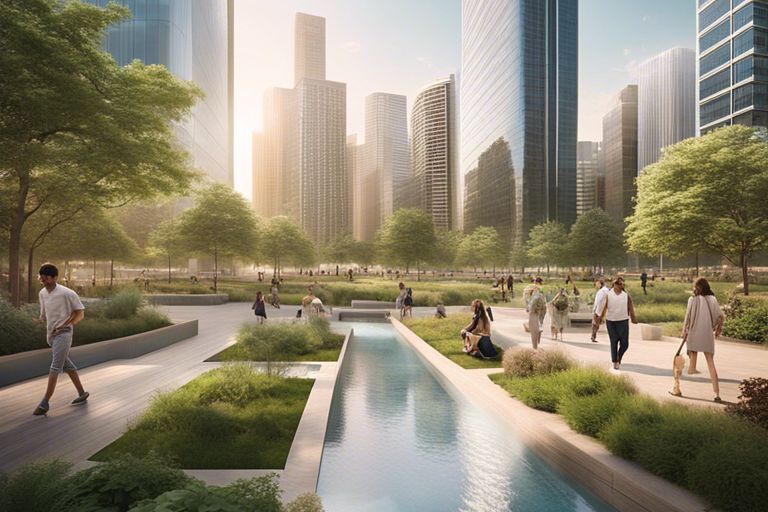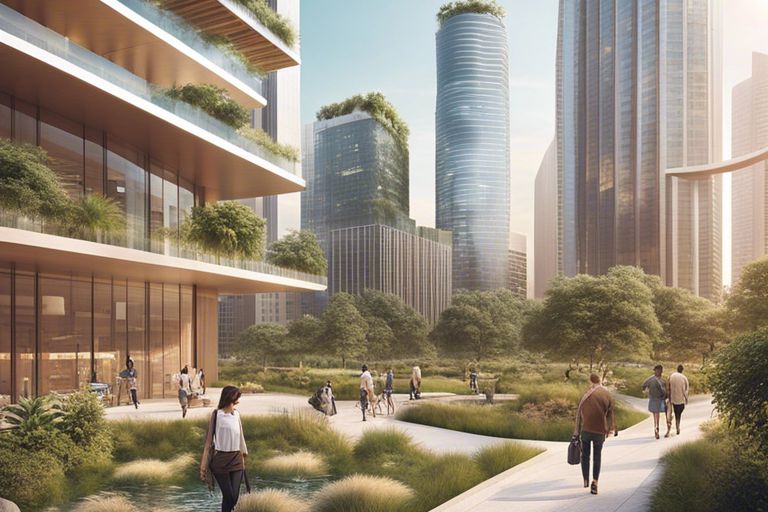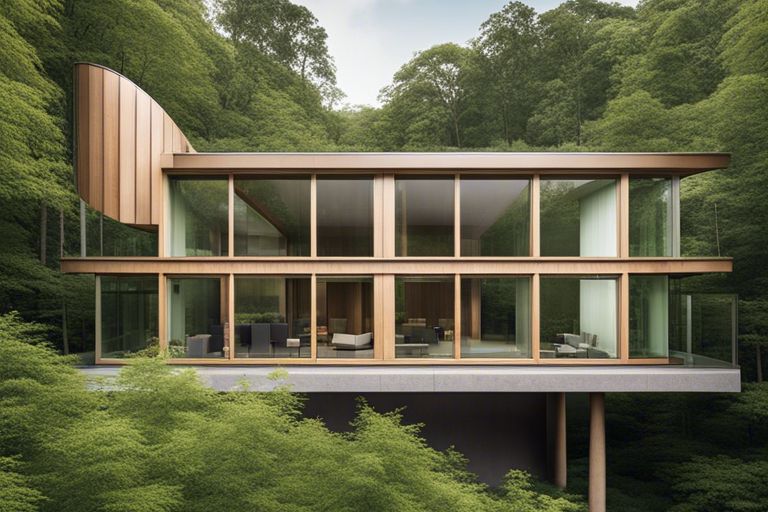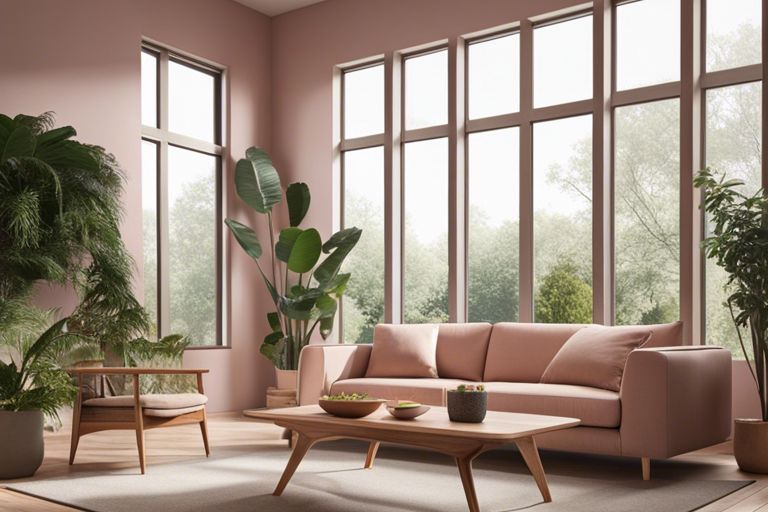This guide will show you how biophilic design can play a crucial role in supporting biodiversity and ecosystem health around your property. By incorporating natural elements and features into your building, you can create a harmonious environment that benefits both local wildlife and your own well-being. Discover the key principles and practical tips to boost biodiversity through biophilic design.
Key Takeaways:
- Biophilic design benefits biodiversity: Incorporating nature into architecture and urban environments can support local ecosystems by providing habitats for various flora and fauna.
- Use of green roofs and walls: Implementing green roofs and walls in buildings can promote biodiversity by offering vegetation for insects and birds, as well as helping to manage stormwater runoff.
- Creating connectivity with nature: Designing spaces that allow for natural light, views of greenery, and access to outdoor areas can enhance biodiversity by encouraging interactions between humans and wildlife.
Understanding Biophilic Design
Before venturing into the specifics of biophilic design, it’s important to understand the foundational concepts behind this innovative approach to architecture and interior design. By incorporating elements of nature into your living or working spaces, you are not only creating aesthetically pleasing environments but also supporting biodiversity and ecosystem health.
Defining Biophilic Design and Its Importance
Even if you aren’t familiar with the term, chances are you’ve experienced the benefits of biophilic design at some point in your life. Biophilic design is an innovative approach that seeks to merge the natural world with man-made environments, enhancing your connection to nature. By incorporating elements like natural light, greenery, and natural materials into your living or workspace, you can improve your mental well-being, productivity, and creativity. This design philosophy is not just a trend but a crucial step towards creating sustainable and healthy spaces for both humans and wildlife.
The Connection Between Biophilic Design and Biodiversity
Now, let’s explore into the deeper connection between biophilic design and biodiversity. Biophilic design goes beyond aesthetics; it plays a significant role in supporting biodiversity and ecosystem health. By creating habitats within urban environments that mimic natural ecosystems, you are providing crucial resources for plants, insects, birds, and other wildlife to thrive. Your design choices can directly impact the local ecosystem by providing food sources, shelter, and connectivity for various species, thereby enhancing overall biodiversity in your surroundings.
Design your living and working spaces with biodiversity in mind by selecting native plants, creating green roofs or walls, and incorporating water features that support local wildlife. Your conscious design decisions can have a positive ripple effect on the environment, creating healthier ecosystems and enhancing overall well-being for yourself and the planet.
Assessing Your Site for Biodiversity
Factors to Consider When Evaluating Your Site
One of the first steps in incorporating biodiversity into your design is to assess your site. When evaluating your site for biodiversity, there are several key factors to consider. These include the existing flora and fauna, soil health, water sources, and microclimates on your property. By understanding these elements, you can create a biodiverse and resilient ecosystem on your site.
- Existing flora and fauna: Assess the current plant and animal species on your site.
- Soil health: Consider the quality of the soil and its ability to support biodiversity.
- Water sources: Identify any water bodies or sources of water on your property.
- Microclimates: Take note of any areas with unique temperature, light, or moisture conditions.
After evaluating these factors, you will have a better understanding of the ecological potential of your site and how you can enhance biodiversity through your design decisions.
Conducting a Biodiversity Audit
Even before starting your design process, it’s important to conduct a biodiversity audit on your site. When conducting a biodiversity audit, you will assess the current state of biodiversity on your property, including the species present, habitats available, and any ecological issues that need to be addressed. By conducting this audit, you can establish a baseline for biodiversity on your site and track changes over time as you implement biodiversity-friendly design strategies.
Identifying Opportunities for Improvement
Your site assessment and biodiversity audit will help you identify opportunities for improving biodiversity on your property. With this information, you can prioritize actions such as creating wildlife habitats, planting native species, restoring degraded areas, or implementing sustainable water management practices. By taking these steps, you can enhance the ecological value of your site and contribute to the overall health of the surrounding environment.
Consider consulting with ecologists or landscape architects to help you identify the most effective strategies for improving biodiversity on your property.
Designing for Biodiversity
To enhance biodiversity in your design projects, it is important to consider how your choices can positively impact the surrounding ecosystem. Integrating biodiversity into your design philosophy can result in spaces that not only benefit the environment but also promote human well-being. The Nature of Architecture: Integrating Biodiversity into ….
How to Incorporate Native Plant Species into Your Design
If you are looking to enhance biodiversity in your design, incorporating native plant species is a great way to attract local wildlife and create a more sustainable environment. By selecting plants that are indigenous to the region, you are providing food and shelter for native species, helping to restore the natural balance of the ecosystem.
Tips for Creating Habitat Diversity
When designing for biodiversity, creating habitat diversity is crucial. By incorporating a variety of habitats such as meadows, wetlands, and forests, you can support a wide range of plant and animal species. Consider including features like bird boxes, bee hotels, and water elements to encourage biodiversity in your design.
- Include a mix of vegetation types to attract diverse wildlife.
- Integrate water features like ponds or streams to support aquatic life.
Any design that prioritizes habitat diversity will contribute to a healthier ecosystem and support biodiversity in the long run.
Strategies for Reducing Urban Heat Island Effect
Designing with strategies to reduce the urban heat island effect can significantly impact the environmental quality of urban areas. By incorporating green roofs, cool pavements, and shade trees into your designs, you can mitigate the heat absorbed and retained by urban surfaces, creating cooler and more comfortable outdoor spaces.
Diversity in vegetation and green spaces helps to cool the surrounding environment, reducing the heat island effect and creating a more sustainable and comfortable urban environment.
Urban
Urban areas can often suffer from elevated temperatures due to the concentration of buildings and infrastructure. Incorporating green spaces, trees, and reflective surfaces in urban design can help to combat the urban heat island effect, creating a more livable and sustainable cityscape.
Material Selection for Biodiversity
Sustainable Material Options for Biophilic Design
Designing with sustainable materials is vital for promoting biodiversity in your projects. When dicking out materials for biophilic design, you should prioritize options that have minimal impact on the environment and support ecosystem health. Using materials such as reclaimed wood, bamboo, cork, and recycled materials can help reduce the carbon footprint of your project while also adding natural elements that benefit biodiversity.
How to Choose Materials That Support Ecosystem Health
An important consideration when choosing materials for biophilic design is their impact on ecosystem health. By selecting materials that are responsibly sourced, toxin-free, and have low embodied energy, you can minimize harm to the environment and support biodiversity. Look for certifications such as FSC (Forest Stewardship Council) for wood products and Cradle to Cradle for overall sustainability.
Material selection plays a crucial role in promoting biodiversity within your built environment. By consciously choosing materials that align with the principles of biophilic design, you can create spaces that not only benefit human well-being but also support the health of the surrounding ecosystems.
Avoiding Materials That Harm Biodiversity
There’s a range of materials that can negatively impact biodiversity, from those with high carbon emissions to those that contribute to deforestation and habitat destruction. Avoid using materials such as virgin plastic, non-sustainably sourced wood, and products containing harmful chemicals that can leach into the environment and harm wildlife.
Understanding the lifecycle of materials and their environmental implications is crucial in making informed decisions that minimize harm to biodiversity. By steering clear of harmful materials and opting for sustainable alternatives, you can contribute to the protection and preservation of ecosystems for future generations.
Water Conservation and Management
How to Design for Rainwater Harvesting and Greywater Reuse
Your building can be a part of sustainable water management by incorporating systems for rainwater harvesting and greywater reuse. Harvesting rainwater involves collecting and storing rainwater for later use, such as watering plants or flushing toilets. Greywater, on the other hand, is wastewater from sinks, showers, and laundry that can be treated and reused for non-potable purposes. Designing your building with these systems in mind can help reduce your reliance on freshwater sources and lessen the burden on municipal water treatment facilities.
Tips for Reducing Water Consumption in Buildings
Consumption of water in buildings can be minimized by implementing simple yet effective strategies. Consider installing low-flow fixtures such as faucets and toilets to reduce water usage. Another tip is to fix leaks promptly, as even small leaks can add up to significant water wastage over time. Additionally, reusing collected rainwater or greywater for tasks like irrigation can further lower your building’s water footprint.
Strategies for Managing Stormwater Runoff
Assuming responsibility for managing stormwater runoff is crucial for preserving the health of local water bodies and ecosystems. By incorporating features like permeable pavements, bioswales, and green roofs, you can help control and filter stormwater onsite before it enters drainage systems. This not only reduces the risk of flooding and erosion but also prevents pollution from reaching waterways.

Integrating Wildlife-Friendly Features
Not only does biophilic design benefit humans, but it also plays a crucial role in supporting biodiversity and ecosystem health. By integrating wildlife-friendly features into your projects, you can create spaces that promote the well-being of local fauna and flora.
How to Design for Wildlife Corridors and Connectivity
Wildlife corridors are imperative for ensuring the movement and survival of various species. When designing your space, consider connecting fragmented habitats through green corridors or planting native vegetation to create a network that allows wildlife to move freely. By promoting connectivity, you can help maintain healthy populations and genetic diversity among species.
Tips for Incorporating Bird-Friendly Features
Features such as bird feeders, bird baths, and nesting boxes can attract a variety of bird species to your site, contributing to its biodiversity. Additionally, using bird-friendly landscaping practices, such as planting native trees and shrubs, will provide food and shelter for birds throughout the year.
- Position bird feeders and baths away from windows to prevent bird collisions.
- Plant a variety of native plants to attract different bird species to your garden.
- Limit the use of pesticides to protect birds and their food sources.
Though the needs of birds may vary, incorporating these features can help support bird populations in your area.
Strategies for Supporting Local Pollinators
If you want to enhance biodiversity in your projects, consider implementing strategies to support local pollinators. This includes planting native flowering plants, creating habitat structures like bee hotels, and avoiding the use of harmful pesticides. By providing a suitable environment for pollinators, you can help ensure the reproduction of flowering plants and maintain a healthy ecosystem balance.
Final Words
Considering all points, you now understand the significance of incorporating biophilic design in your building projects to support ecosystem health. By integrating nature-inspired elements, materials, and processes, you not only create more sustainable and healthier spaces but also contribute to the conservation and restoration of biodiversity.
Recall, every decision you make in the design and construction process can have an impact on the surrounding environment. With a thoughtful approach towards biophilic design, you have the power to create spaces that not only benefit the users but also enhance the overall health of our ecosystems. Embrace biophilic design principles in your projects and pave the way for a more harmonious relationship between built environments and nature.
FAQ
Q: What is biophilic design?
A: Biophilic design is an approach to architecture and interior design that seeks to connect people with the natural environment. It incorporates natural elements, such as plants and natural light, into buildings to create spaces that support human health and well-being.
Q: How does biophilic design support biodiversity?
A: Biophilic design can support biodiversity by creating habitats for plants and animals within built environments. By incorporating green spaces, such as green roofs or living walls, biophilic design can help increase the presence of native flora and fauna in urban areas.
Q: What are some ways to implement biophilic design in a building?
A: Some ways to implement biophilic design in a building include incorporating natural materials, such as wood and stone, using a variety of plants throughout the space, maximizing natural light and views of nature, and creating indoor/outdoor connections, such as outdoor courtyards or balconies.



